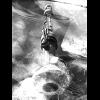-
Chatbox
Join Ivan's composition contest "Estampas de España" (+700$ in prizes)!
The Evan Erickson Music "2024 Call For Scores" is now on! ($1500 in prizes)
Load MoreYou don't have permission to chat.
-
Who's Online 5 Members, 0 Anonymous, 133 Guests (See full list)


.thumb.jpg.a1bd070fa88caa1c83527ffe77c97a41.jpg)
